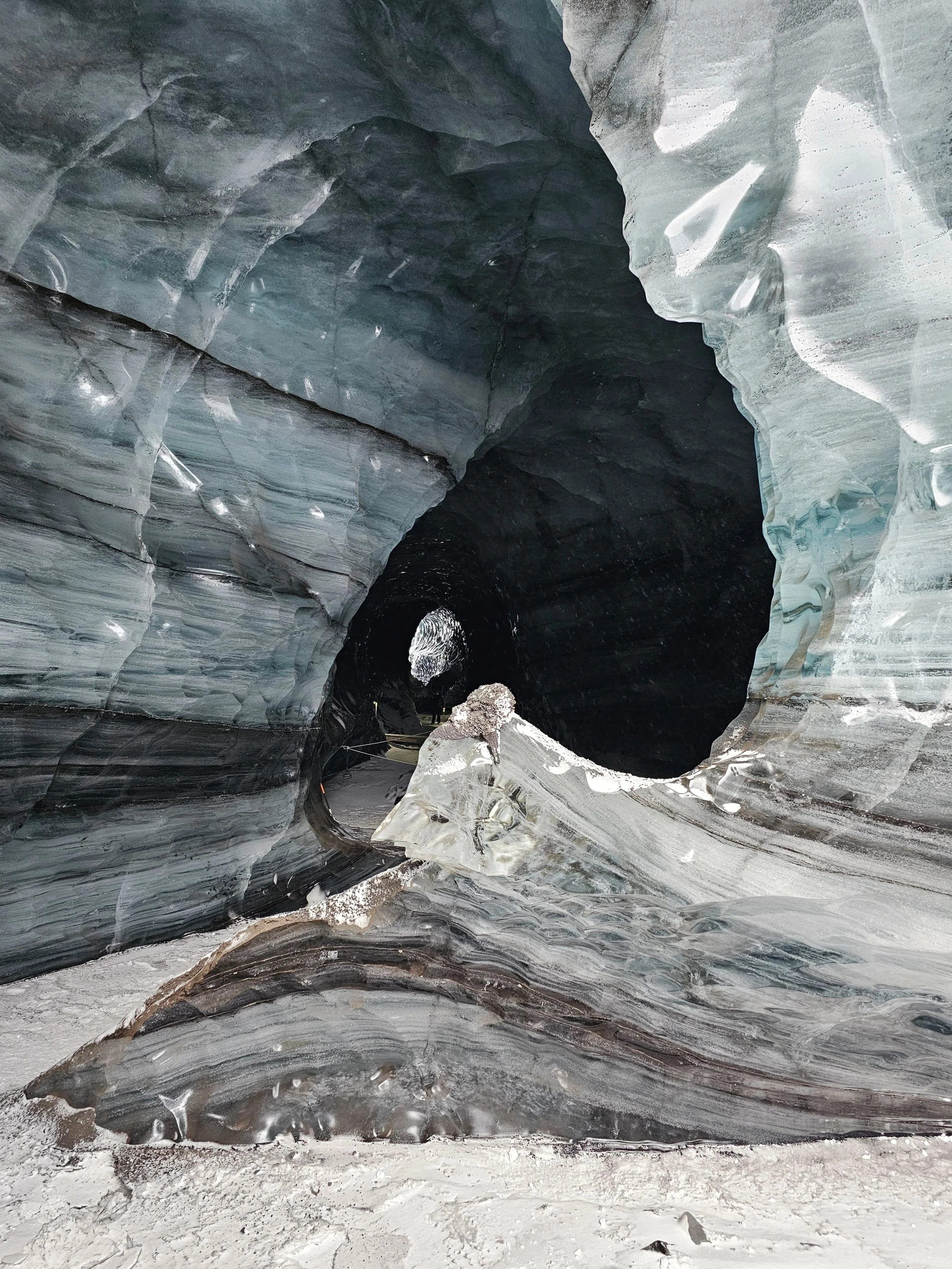Cropping
Advanced Composition Principle
Cropping is the process of cutting out unwanted parts of an image to improve composition, focus, or balance. It helps remove distractions, tighten the framing around your subject, and enhance the overall visual impact.
Vik, Iceland: In the image above, the viewers eye is draw first to the inverted heart shaped opening and then to the bright circle in the center. This circle is the entrance to the grand Ice Caves.
The images below are the same location and the same lens, the only difference is what we chose to include in the frame.
Cropping During Image Capture
We made the decisions as to what the final images should be while taking the photograph - a process often referred to as “in camera.” This leads to a reduction in the need for edits and post production work. While it’s a powerful tool, cropping should be done in camera as much as possible. If you try to crop an image after it is shot, and then enlarge the results, the result can be reduce image quality.
A well-cropped photo can follow the Rule of Thirds or the Golden Ratio, making the composition more engaging. Cropping can also adjust the aspect ratio to fit different formats, like social media posts or prints.
Juno, Alaska: Glacier photos from various viewpoints.
Cropping After Image Capture
In the image below, it was not possible to get too close to the croissants. As a result, we selected food mode, photographed the pasty case, and then cropped the image resulting in the close of that highlights the cherry.
Original Image Cropped Tighter & Tighter…
Focused on the cherry only…
When you crop a digital image, you are essentially removing a portion of the original capture, leaving behind fewer pixels to represent the scene. Since image quality is tied to resolution, cropping significantly reduces the number of pixels, which can make the image appear less sharp, especially when enlarged. Additionally, if the cropped section is too small, details may become pixelated or blurry, as you're only working with a fraction of the original data. To maintain quality, it's best to compose shots carefully or use higher-resolution images when cropping is necessary.
Move to the next Advanced Composition Principle: Color Theory
Return to Composition Overview
“Light, color, and composition are the three keys to a great photograph. But the most important is knowing what to leave out.”












